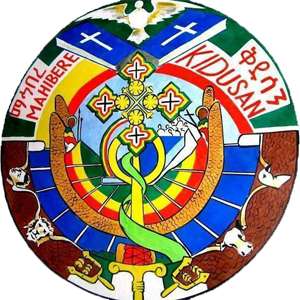About Mahibere Kidusan
Name
The association was named Mahibre Kidusan (an association in the name of Saints) Saints would be commemorated in that they abounded the secular world and sacrificed their lives to the orthodox belief for whom the prophets prophesized and apostles evangelized.
History
In 1977 E.C (Ethiopian Calendar) few students of higher education initiated the youth in the compass to become members of Sunday school and know the teachings of the churches. Later, this effort had been strengthened by students trained in the Zeaway Hamere Berehan St.Gebreil Clergy Training Monastery by the Then Arch Bishop of Shewa Abune Gorgorious II.
The movements continued in Bilatie military camp that brought all students of higher institutions in the country in 1983 E.C after a year, with the blessing of the church fathers the associations was set up by the name “Mahibre Kidusan” under the Sunday School Department of the Ethiopian Orthodox Tewahedo Church. Since then the associations has been proving spiritual service.
Vision
“Envisioning the Church fulfill its universal leadership role.”
Mission
Fructify and procure an organized, whole, eloquent, moderate, versatile and leader generation who strives in achieving the church’s mission and diligently work for her existence.
Institutional Asset
OBJECTIVES
Stand
The association shall not interfere in administrative affairs of the church and it is free from and political affiliation.
Membership
- Disciples who trained in various training institution of the church and providing ministerial activity.
- Higher institution students attending Sunday in their respective parishes.
- Member of Sunday school or/and parish that provide spiritual service after graduating from higher institution.
- The laity who support the objective of the association with their knowledge, money and labor.
Structure
Mahiber Kidusan is set under the Sunday School department of the Ethiopian Orthodox Church. It provides spiritual services by its sub centers in the dioceses all over the country and in the Diaspora.


“Precious in the sight of the Lord is the death of His Saints” (Psalm 116:15)
The remarkable and astonishing life of chosen children of God is most commemorated in their departure day. After their exhausting and tremendous diligence, perseverance and triumph of evil, Saints depart to the heavens by the praise of Angels in glory and inherit the Kingdom of God.
Our country has welcomed most celebrated and prominent Saints who has suffered much for the salvation of us, performed many miraculous, plead and made prostration for we would not even see the glimpse of fire of hell. Ethiopians celebrate our Righteous father Abune Geber Menfese Qidus in his departure day Tikimet 5 E.C. (October 16 G.C.)
The Liturgy of Fasting
Dear Children of God, how are you? How is the new year and school? We hope you are attending your lessons attentively in this new year and studying well. It is also important to ask you teachers what you do not understand and something that is not clear for you. If not, you would not be able to pass your exams or else get good mark. You shall attend the church education as well, so that you could be a good, brave and generous child of God.
Dear Children of God, this season is known as “The Month of flowers.” We commemorate our Holy Mother Saint Mary, her beloved Son, Lord and Savior Jesus Christ and their flight to Egypt and Ethiopia in escape of King Herold who was trying to kill baby Jesus, out of fear of Him reigning as a King.
Children, we hope you remember our last lesson on the celebration of Feasts! And for now we will teach you about “The Liturgy of Fasting.”
The Mystery of Flowers
The magnificent nature of flowers blooming especially during on the month of Meskerm from 26 until Hedar 6 E.C. (October 7- until November 16 G.C) has mystical meaning in Christian life. The Mother of the world’s redeemer Saint Mary is represented through flowers. Prophet Isaiah has described her as, “There shall come forth a Rod from the stem of Jesse, And a Branch shall grow out of his roots.” (Isaiah 11:1)
Laity’s Role in Church
The hoy place for our harmony, the foundation of world peace and salvation, Orthodox Incarnation Church is where laities serve the Lord. Church is Holy, One, Apostolic and for all. With this truth, we are to serve Apostolic service, be holy and live in unity.
Feast Day!
It is a feast day
For us on holy day
Sing a song in appraisal
Call its name, be delightful
Let’s praise the day!
The Cross entered today
Ethiopia’s feast day
Celebrate the holy day!